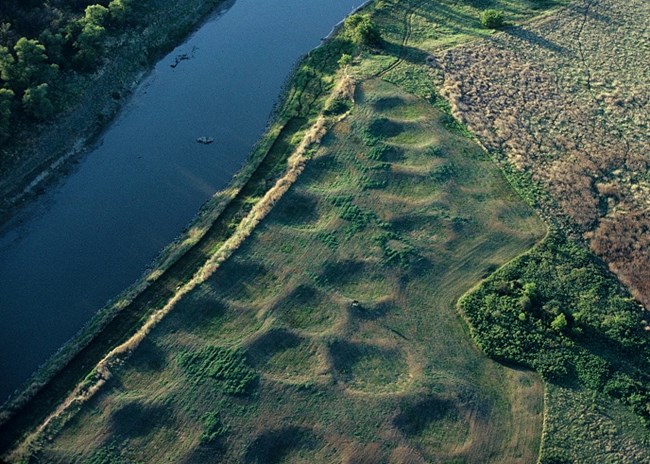
NPS Awatixa Village, also known as Sakakawea Village, was occupied from c. 1790-1834 CE. The Awatixa Hidatsa subgroup established the village after a smallpox epidemic forced them away from the Awatixa Xi'e or Lower Hidatsa Village. It originally contained as many as sixty earthlodges with a population that fluctuated widely. In 1834, a Sioux raid burned the village to the ground. The survivors are thought to have established the short lived Taylor Bluff Village on the opposite bank of the Knife River. Today, the Awatixa Village is also called Sakakawea Village after the woman who resided there in 1804 and joined the Lewis and Clark Expedition. The village is also the most threatened among the Knife River Indian Villages. The Knife River has eroded away part of the village, leaving only thirty-one visible earthlodge depressions. This cut-bank erosion does however allow visitors to view many cultural features and artifacts in cross-section from a trail that extends along the Knife River below the village. |
Last updated: April 10, 2015
